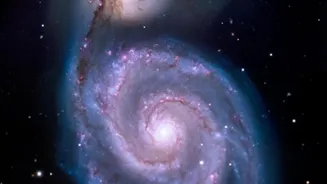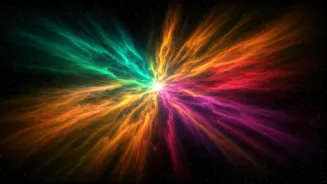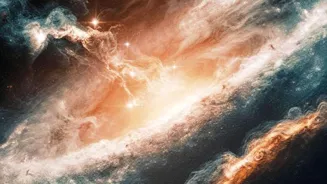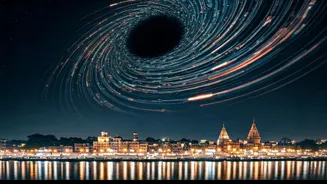Unveiling the Mysteries of the Cosmic Microwave Background: Discover the Echoes of the Big Bang and the Story They Tell
In the vast expanse of the cosmos, a faint afterglow whispers secrets of the universe's
birth. This is the Cosmic Microwave Background (CMB), a relic radiation that permeates all of space, offering scientists a unique window into the early universe.
Imagine tuning your old television to a static channel – a small percentage of that static is actually the CMB, a tangible connection to the Big Bang itself.
Studying the CMB is like listening to the first echoes of creation, helping us understand how the universe evolved from a hot, dense state to the complex structure we observe today. It's a story told in microwaves, a tale etched across the sky.
Subtle CMB temperature variations reveal cosmic structure origins
The CMB isn't just some uniform haze; it possesses subtle temperature variations, incredibly minute fluctuations that hold a wealth of information.
These tiny differences, only a few parts in a million, represent the seeds from which all cosmic structures – galaxies, clusters of galaxies, and even the vast voids between them – eventually grew. Think of it like this: imagine dropping a pebble into a still pond.
The ripples created are analogous to the CMB fluctuations, and these ripples, over billions of years, shaped the distribution of matter in the universe.
Mapping these fluctuations allows cosmologists to piece together the conditions that existed in the very early universe, moments after the Big Bang. It's like analyzing the patterns in the primordial soup that gave rise to everything we see around us.
Discovery of CMB in 1964 revolutionized cosmology, solidifying Big Bang theory
The discovery of the CMB in 1964 by Arno Penzias and Robert Wilson was a serendipitous accident, a discovery that revolutionized our understanding of cosmology. Initially, they were perplexed by a persistent background noise in their radio antenna, a noise they couldn't eliminate.
After ruling out other possible sources, including pigeon droppings, they realized they had stumbled upon something truly extraordinary - the afterglow of the Big Bang.
This discovery earned them the Nobel Prize in Physics and solidified the Big Bang theory as the leading model for the origin of the universe. It marked a paradigm shift, moving cosmology from a field of speculation to one of precise measurement and observation.
Space missions map CMB, confirm Big Bang, reveal universe's secrets
Various space missions and ground-based experiments have been dedicated to mapping the CMB with ever-increasing precision.
The Cosmic Background Explorer (COBE), the Wilkinson Microwave Anisotropy Probe (WMAP), and the Planck satellite have provided increasingly detailed maps of the CMB, revealing finer and finer structures in its temperature variations.
These missions have not only confirmed the Big Bang theory with remarkable accuracy but have also allowed us to determine key cosmological parameters, such as the age, composition, and geometry of the universe.
The data collected from these missions is a treasure trove for cosmologists, providing insights into the fundamental laws of physics that govern the universe.
CMB analysis reveals universe's early secrets and cosmological mysteries
Analyzing the CMB involves sophisticated techniques and complex mathematical models. Scientists use statistical methods to analyze the patterns in the CMB maps, extracting information about the density fluctuations in the early universe.
These analyses allow them to test various cosmological models and refine our understanding of inflation, dark matter, and dark energy – some of the biggest mysteries in modern cosmology.
The CMB also provides a unique probe of the physics of the early universe, allowing us to test theories about the fundamental forces of nature at extremely high energies, energies that are inaccessible to terrestrial particle accelerators.
Studying CMB for primordial gravitational waves & universe origins
The study of the CMB continues to be a vibrant and active area of research.
Future missions and experiments aim to probe the CMB with even greater sensitivity, searching for faint polarization patterns that could reveal the existence of primordial gravitational waves, ripples in spacetime generated during inflation, an incredibly rapid expansion of the universe in its earliest moments.
Detecting these gravitational waves would provide direct evidence for inflation and offer a glimpse into the universe at its very beginning.
The CMB remains one of the most powerful tools we have for understanding the origins and evolution of the universe, a cosmic Rosetta Stone that unlocks the secrets of our existence.
AI Generated Content. Glance/InMobi shall have no liability for the content










